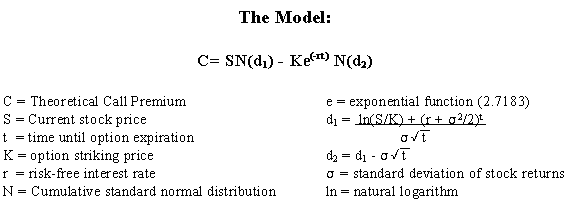
(a) What are the differences between profit and loss and cash flow statements? [5 marks]
(b) What are the differences between debt and equity finance? [5 marks]
(c) What is an option and how might it be valued? [5 marks]
(d) Comment on the current prices of high-tech stocks. [5 marks]
Solution notes:
(a) A cash flow statement shows debits and credits at the time they are paid.
A profit and loss statement shows debits and credits at the time they are incurred, for example at invoice date.
For small start-up companies cash-flow is more important than profitability
(b) Equity finance, represented by shares, is where a proportion of the ownership of the company is sold to investors. They usually, but may not, include voting, dividend and other rights
Debt equity is a loan to the company, for example a debenture or a bond. It may be accompanied by periodic interest payments, and may have conversion rights to shares in the company if the debt is not paid or under other conditions.
(c) (Adapted from
http://bradley.bradley.edu/~arr/bsm/model.html)
The idea of
options is not new. Ancient Romans, Grecians, and Phoenicians traded
options against outgoing cargoes from their local seaports. When used
in relation to financial instruments, options are generally defined as
a "contract between two parties in which one party has the right but
not the obligation to do something, usually to buy or sell some
underlying asset". Having rights without obligations has financial
value, so option holders must purchase these rights, making them
assets. This asset derives their value from some other asset, so they
are called derivative assets. These derivative instruments are
tradable in their own right. Call options are contracts giving the
option holder the right to buy something, while put options,
conversely entitle the holder to sell something. Payment for call and
put options, takes the form of a flat, up-front sum called a premium.
European exercise terms dictate that the option can only be exercised on the expiration date. American exercise term allow the option to be exercised at any time during the life of the option, making American options more valuable due to their greater flexibility. Options can also be associated with bonds (i.e. convertible bonds, where payment occurs in instalments over the entire life of the bond. However, most analytical work has been done for European style options for assets with a single payment, such as shares, although it may be adapted for more complex cases.
Share options in the company can form a tax-efficient part of the remuneration package for key employees of high-tech companies, in the expectation of rapid growth.
Modern option pricing techniques, with roots in stochastic calculus,
are often considered among the most mathematically complex of all
applied areas of finance. The best known option pricing model is that
which Fischer Black and Myron Scholes, introduced in 1973 and for
which they were awarded the 1997 Nobel prize.

In order to understand the model itself, we divide it into two parts. The first part, SN(d1), derives the expected benefit from acquiring a stock outright. This is found by multiplying stock price [S] by the change in the call premium with respect to a change in the underlying stock price [N(d1)]. The second part of the model, Ke(-rt)N(d2), gives the present value (NPV) of paying the exercise price on the expiration day. The fair market value of the call option is then calculated by taking the difference between these two parts.
The model is not perfect, as for example the collapse of the Magellan Hedge fund demonstrated, and makes a number of assumptions, such as that of a perfect, efficient market. Some variables, such as the future volatility of the stock, may be hard to estimate.
(d) This is written in Feb 2000, when high-tech stocks are at an all time high.
Points to make: